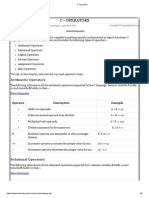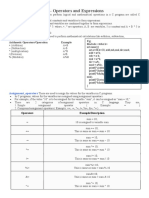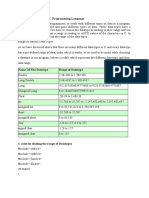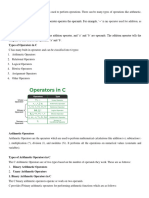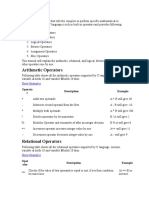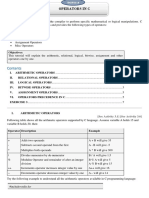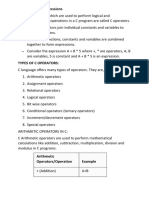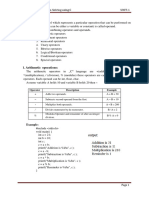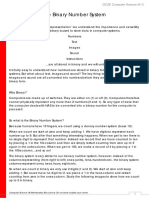0% found this document useful (0 votes)
25 views22 pagesConstant and Operator
The document discusses constants and operators in C programming, defining constants using const and #define, describing different types of operators like arithmetic, relational, logical, and bitwise operators, and providing examples of how to use these operators in C code.
Uploaded by
rohitggothiCopyright
© © All Rights Reserved
We take content rights seriously. If you suspect this is your content, claim it here.
Available Formats
Download as PDF, TXT or read online on Scribd
0% found this document useful (0 votes)
25 views22 pagesConstant and Operator
The document discusses constants and operators in C programming, defining constants using const and #define, describing different types of operators like arithmetic, relational, logical, and bitwise operators, and providing examples of how to use these operators in C code.
Uploaded by
rohitggothiCopyright
© © All Rights Reserved
We take content rights seriously. If you suspect this is your content, claim it here.
Available Formats
Download as PDF, TXT or read online on Scribd
/ 22

